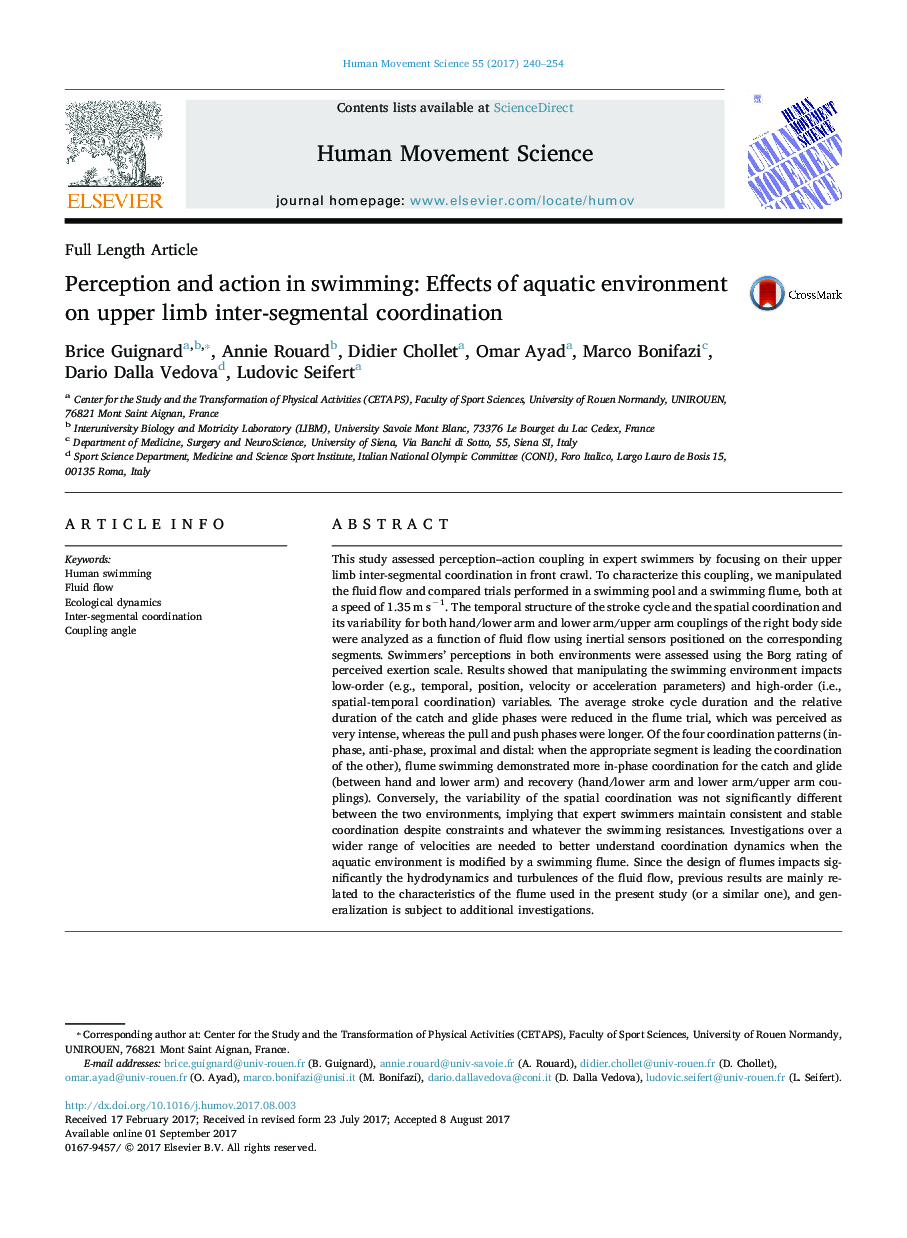| کد مقاله | کد نشریه | سال انتشار | مقاله انگلیسی | نسخه تمام متن |
|---|---|---|---|---|
| 5041947 | 1474210 | 2017 | 15 صفحه PDF | دانلود رایگان |
- Swimming in this flume impacts the temporal structure of the swimming stroke cycle.
- In-phase pattern of coordination is generally more common in the present flume.
- Coordination variability was similar in both environments for expert swimmers.
- Flume swimming is perceived as more demanding than a similar test in the pool.
- Flume swimming modified swimmers' fluid perception, leading to adaptive behaviors.
This study assessed perception-action coupling in expert swimmers by focusing on their upper limb inter-segmental coordination in front crawl. To characterize this coupling, we manipulated the fluid flow and compared trials performed in a swimming pool and a swimming flume, both at a speed of 1.35 m sâ1. The temporal structure of the stroke cycle and the spatial coordination and its variability for both hand/lower arm and lower arm/upper arm couplings of the right body side were analyzed as a function of fluid flow using inertial sensors positioned on the corresponding segments. Swimmers' perceptions in both environments were assessed using the Borg rating of perceived exertion scale. Results showed that manipulating the swimming environment impacts low-order (e.g., temporal, position, velocity or acceleration parameters) and high-order (i.e., spatial-temporal coordination) variables. The average stroke cycle duration and the relative duration of the catch and glide phases were reduced in the flume trial, which was perceived as very intense, whereas the pull and push phases were longer. Of the four coordination patterns (in-phase, anti-phase, proximal and distal: when the appropriate segment is leading the coordination of the other), flume swimming demonstrated more in-phase coordination for the catch and glide (between hand and lower arm) and recovery (hand/lower arm and lower arm/upper arm couplings). Conversely, the variability of the spatial coordination was not significantly different between the two environments, implying that expert swimmers maintain consistent and stable coordination despite constraints and whatever the swimming resistances. Investigations over a wider range of velocities are needed to better understand coordination dynamics when the aquatic environment is modified by a swimming flume. Since the design of flumes impacts significantly the hydrodynamics and turbulences of the fluid flow, previous results are mainly related to the characteristics of the flume used in the present study (or a similar one), and generalization is subject to additional investigations.
Journal: Human Movement Science - Volume 55, October 2017, Pages 240-254
